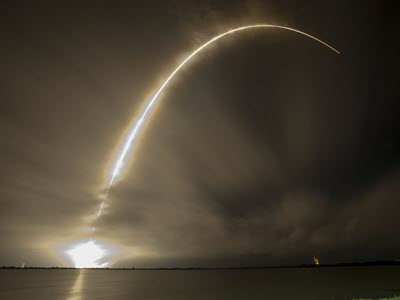Emerging Nonproliferation Challenges in the Indo-Pacific
Jeremy Rausch assesses how threats faced by U.S. allies and partners in the Indo-Pacific may motivate them to acquire nuclear weapons and conclude by considering options for Congress to strengthen U.S. security guarantees and prevent nuclear proliferation in the region.
The Indo-Pacific is home to seven of the world’s ten largest standing militaries, five of the world’s declared nuclear nations, and five countries allied with the United States through mutual defense treaties. Several nuclear threshold powers also reside in the region—states with the capability to develop nuclear weapons without having done so—such as Taiwan and U.S. treaty allies Japan and South Korea. These states perceive an increasingly unpredictable and threatening regional security environment due to North Korea’s maturing nuclear and ballistic missile programs, China’s military modernization and growing regional assertiveness, and the strategic implications of Russia’s invasion of Ukraine. As a result, U.S. allies and partners in the Indo-Pacific have expressed a desire to upgrade conventional military capabilities and strengthen U.S. extended nuclear deterrence guarantees.
In the absence of substantial reassurance by the United States, nuclear threshold states may believe that acquiring nuclear weapons is a low-cost undertaking where the perceived benefits outweigh the consequences. This brief assesses how threats faced by U.S. allies and partners in the Indo-Pacific may motivate them to acquire nuclear weapons and considers options for Congress to strengthen U.S. security guarantees and prevent nuclear proliferation in the region.
Regional Outlook
South Korea faces an acute nuclear threat from North Korea’s expanding nuclear arsenal and ballistic missile program. North Korea has steadily modernized its nuclear program, and there are growing doubts in Seoul regarding the U.S. willingness to employ nuclear weapons to defend South Korea. Moreover, the belief that nuclear weapons can provide reliable countermeasures against Pyongyang if deterrence fails has led the Yoon administration to advance several proposals to enhance deterrence, ranging from returning U.S. tactical nuclear weapons to South Korea and implementing joint control of U.S. nuclear weapons to developing an indigenous nuclear weapons program. South Korea already possesses programs to develop ballistic and cruise missiles, following the removal of U.S restrictions on the payload of South Korean missiles, as well as robust civilian nuclear expertise and technology. Developing a nuclear weapons program has been supported by a majority of the South Korean public since 2017, and that support is only growing.
Japan confronts threats from North Korea’s conventional and nuclear missile programs and China’s increasingly robust military posture in the region. The gravity of these threats to Japanese national security was reflected in the December 2022 National Security Strategy, which, among other momentous developments, authorized the operation of counterstrike capabilities for the Japan Self-Defense Forces. While there is currently weak government and public support for the acquisition of nuclear weapons, Japan uniquely possesses an indigenous nuclear enrichment capability and the technical capacity to rapidly develop nuclear warheads. Possessing nuclear weapons could afford Japan a more credible deterrent against North Korea, as well as enable it to better resist China’s coercion and aggression in territorial disputes in the East China Sea.
Taiwan faces an existential threat from China. Unlike Japan and South Korea, Taiwan is not a U.S. treaty ally and therefore does not enjoy the same extended deterrence guarantee if China were to invade the island. Given this fact, coupled with China’s conventional military advantage, Taiwan could leverage its technical expertise to develop nuclear weapons to strengthen deterrence and offset its growing military imbalance with China. Taipei previously pursued a nuclear weapons program following China’s first nuclear test in 1964 and was estimated to have the capacity to rapidly develop nuclear weapons. However, the program was repurposed for civilian use after the United States pressured Taipei to give up the program in 1988. Taiwan has since promised to not seek nuclear weapons.
Options for Congress
A nascent regional arms race, coupled with perceptions of a weakening U.S. nuclear umbrella and heightened risk of regional conflict, could foreshadow the proliferation of nuclear weapons among Indo-Pacific allies and partners. To preserve regional stability, adequately reassure U.S. allies and partners, and dissuade them from pursuing nuclear weapons, Congress should consider the following actions.
First, it could increase congressional delegations to U.S. allies and partners in the Indo-Pacific region as a show of resolve and commitment. Regular meetings are more effective than one-off trips in building relationships and could enhance strategic communication and understanding of domestic politics in each country. In addition, Congress could invite delegations from counterpart legislative bodies—such as the Japanese Diet and the South Korean National Assembly—to attend military exercises like the Rim of the Pacific and visit U.S. strategic assets and sites, rendering the U.S. nuclear deterrent more tangible.
Second, Congress could task the Office of the Secretary of Defense with preparing an annual report on how U.S. government efforts to retire or modernize outdated weapons platforms are perceived by U.S. allies and partners. This would give congressional leaders a greater hand in alliance management as they better connect their budget decisions to allied perceptions of assurance and deterrence.
Third, Congress could commission an appropriate entity to run an unclassified, publicly available tabletop exercise to align thinking with Indo-Pacific allies and partners on a range of regional contingencies, including up to the level of U.S.-China nuclear escalation. Given that most public tabletop exercises are limited to a small number of in-area actors, greater public consideration of the global scope and potential nuclear consequences of a U.S.-China conflict is needed. Moreover, Congress should ensure the inclusion of European and North American allies in these exercises, given their likely involvement in coordinated diplomatic and economic responses.
Fourth, Congress could build on the 2021 Corporate Transparency Act by passing legislation mandating that the Department of Homeland Security expand its Trade Transparency Unit program to include greater coordination with Japan, Singapore, South Korea, and Taiwan. Given North Korea’s use of trade-based money-laundering methodologies and cyberattacks in Asia-based jurisdictions to evade UN and U.S. sanctions, the Treasury Department and Department of Homeland Security will consequently be better able to monitor and impede North Korea’s illicit financing of its nuclear and ballistic missile programs.
Finally, Congress could pass legislation mandating the Department of Energy and Nuclear Regulatory Commission to collaborate with counterparts in Japan, South Korea, and Taiwan on nonproliferation safeguards for small modular nuclear reactors. These reactors pose novel nonproliferation risks, and the creation of a multilateral framework would help cement the status of the United States as a leader in nonproliferation while reinforcing ally efforts to build and export new forms of nuclear energy globally.
Jeremy Rausch is a Project Manager with the Political and Security Affairs group at the National Bureau of Asian Research.
The views expressed are those of the author.



